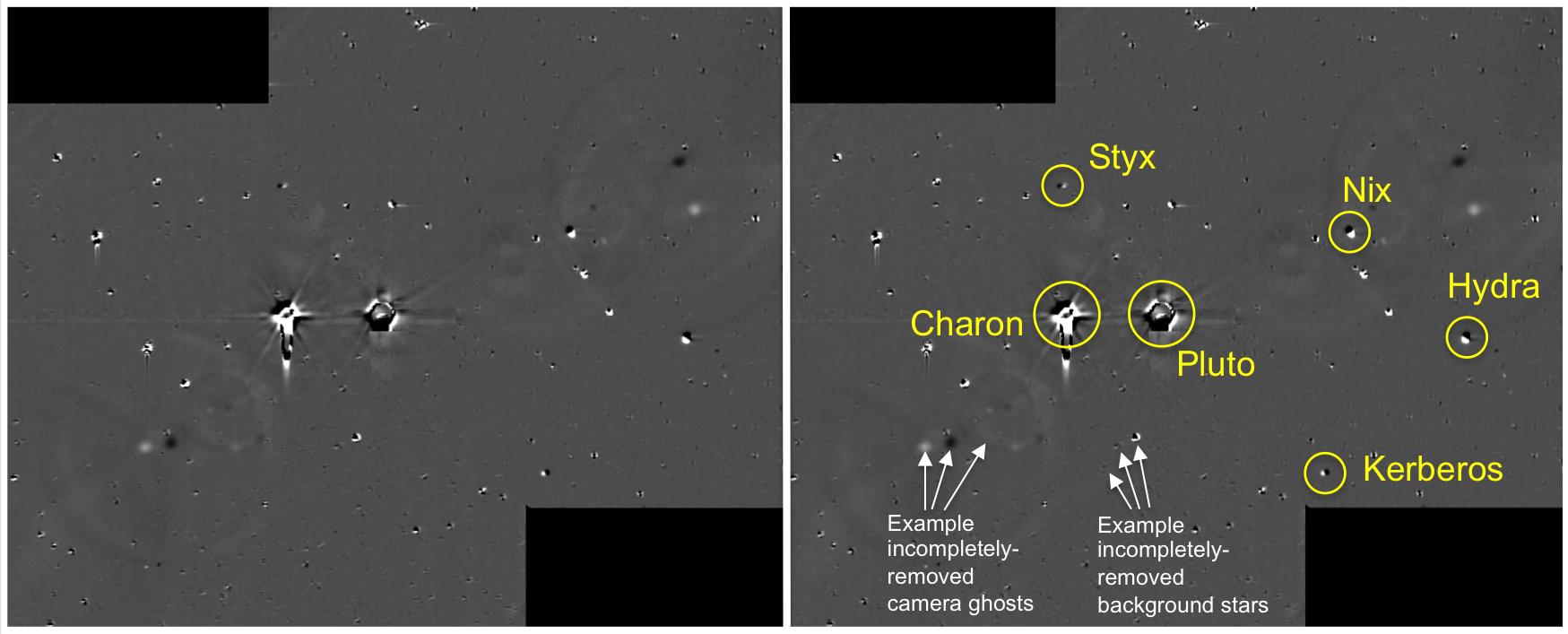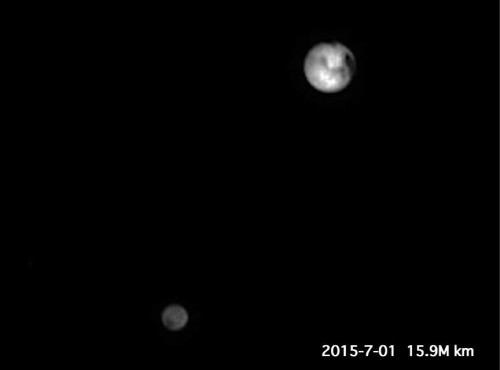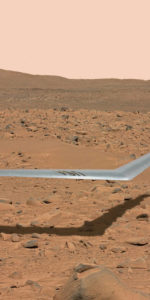
We are now inside two weeks until New Horizons’ date with Pluto on July 14, a day which will surely go down in history and close out humanity’s initial reconnaissance of every major world across the solar system. But in order to get there the spacecraft must avoid hitting anything that might be in the way, such as rings, new moons not seen before, or tiny dust particles. The spacecraft is moving so fast (30,000 mph) that even the tiniest sand grain sized dust particles could be lethal, causing severe damage to the spacecraft and its suite of science instruments and cameras.
For seven weeks now the mission team has been conducting detailed searches for such hazards, using the piano-sized spacecraft’s powerful Long Range Reconnaissance Imager (LORRI) telescopic camera, and today NASA gave New Horizons the final GO to proceed with it original “best” flight path through the Pluto system, one which will allow the mission to conduct all of its originally planned science objectives.

“We’re breathing a collective sigh of relief knowing that the way appears to be clear,” said Jim Green, director of planetary science at NASA. “The science payoff will be richer as we gather data from the optimal flight path, as opposed to having to conduct observations from one of the back-up trajectories.”
Those backup trajectories were known as Safe Haven by Other Trajectory, or “SHBOT” paths. The mission team came up with several SHBOT paths some time ago, just in case hazards were discovered on New Horizons’ course as it flew closer and closer to the Pluto system. The decision on whether to keep the spacecraft on its original course or adopt a SHBOT path had to be made this week, because the last opportunity to change New Horizons’ course for the flyby close encounter is July 4.
In 2011 a fourth moon, Kerberos, was discovered orbiting Pluto, which raised concerns and forced the mission to come up with a hazard analysis team. Every time astronomers looked at Pluto through the Hubble Telescope they found more moons, and even after Kerberos they found a fifth moon in 2012, Styx, so assuming more objects were yet to be seen was a safe bet. However, as the spacecraft drew closer last month and began putting LORRI to work regularly, the team had already estimated the chances of a catastrophic incident at far less than one percent.
Now, just 9 million miles out from pluto, it appears the path is clear, and New Horizons is GO for the best possible trajectory through the Pluto system.
“Not finding new moons or rings present is a bit of a scientific surprise to most of us,” said principal investigator Alan Stern of the Southwest Research Institute (SwRI) in Boulder, Colorado. “But as a result, no engine burn is needed to steer clear of potential hazards. We presented these data to NASA for review and received approval to proceed on course and plan. We are ‘go’ for the best of our planned Pluto encounter trajectories.”
The team’s conclusion is based on their determination that satellites as faint as about 15 times dimmer than Pluto’s faintest known moon, Styx, would have been seen if they existed beyond the orbit of Pluto’s largest and closest moon, Charon. And as for rings, if they do exist then they must be extremely faint, reflecting less than one 5-millionth of the incoming sunlight.
“The suspense – at least most of it – is behind us,” says John Spencer, of SwRI, who leads the New Horizons hazard analysis team. “As a scientist I’m a bit disappointed that we didn’t spot additional moons to study, but as a New Horizons team member I am much more relieved that we didn’t find something that could harm the spacecraft. New Horizons already has six amazing objects to analyze in this incredible system.
T-13 days until Pluto.
Stay with AmericaSpace for regular updates and LIVE COVERAGE of New Horizons’ approach and flyby of the Pluto system.
Be sure to “Like” AmericaSpace on Facebook and follow us on Twitter: @AmericaSpace
Missions » New Horizons »






Yipee! Now we will get the best science possible out of this historic encounter.